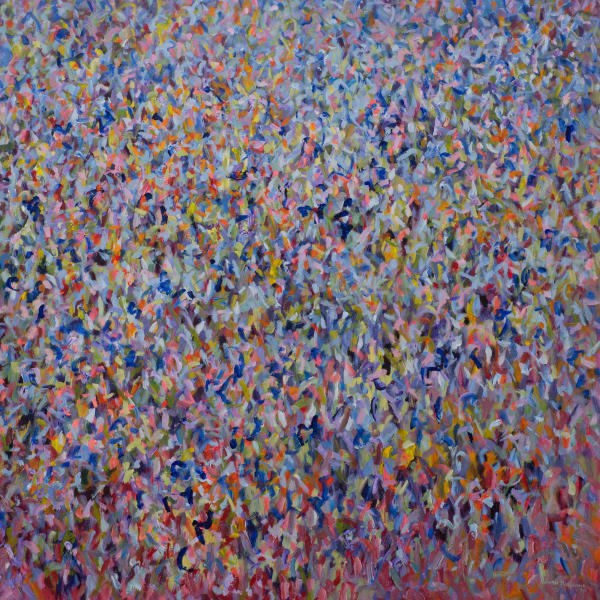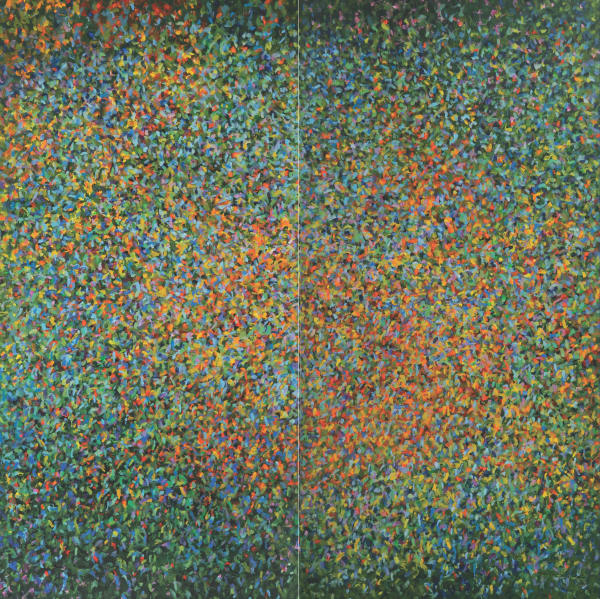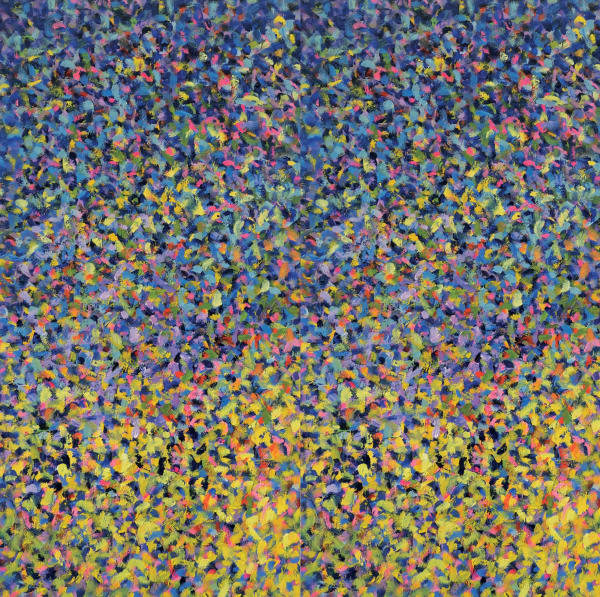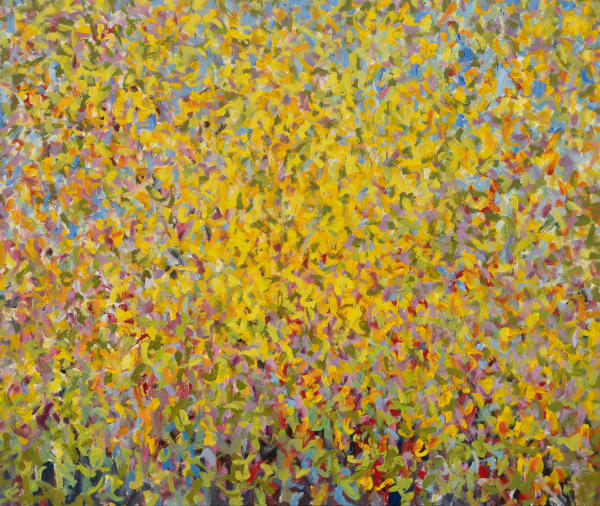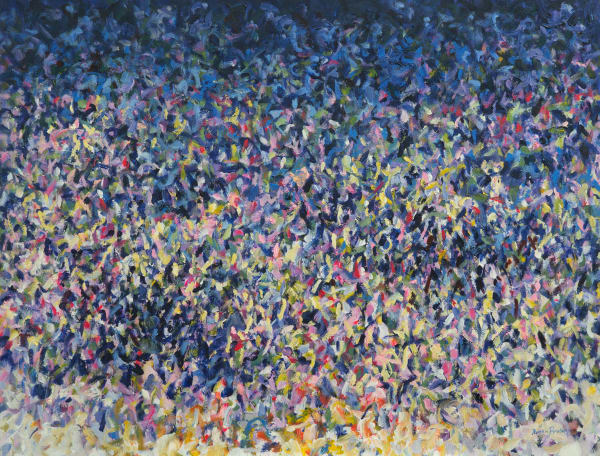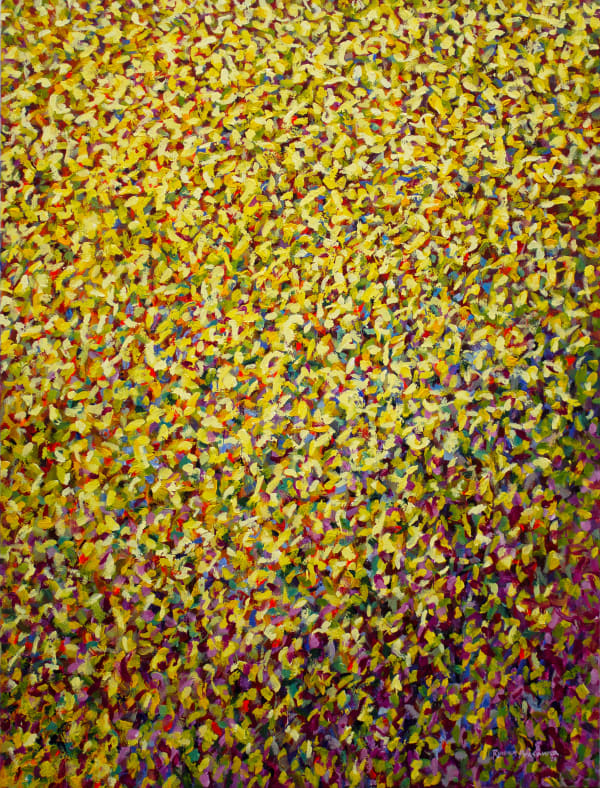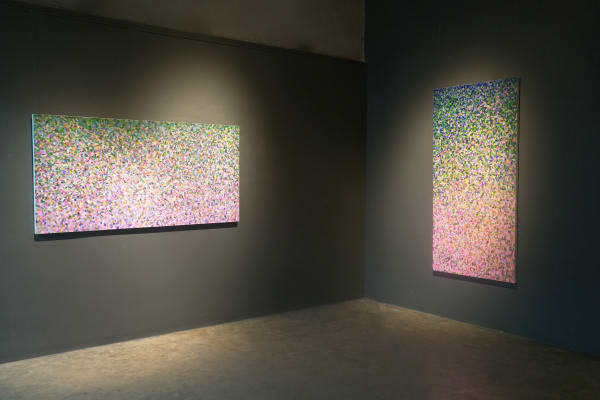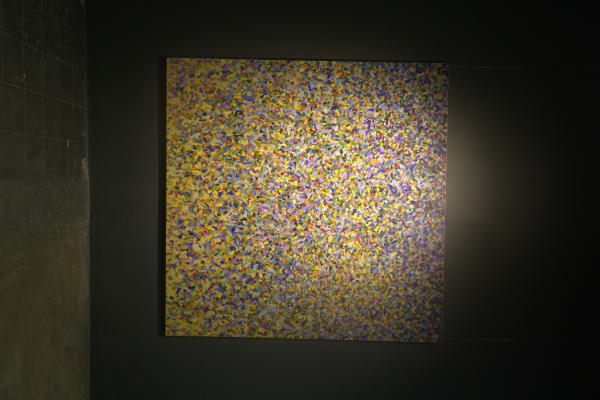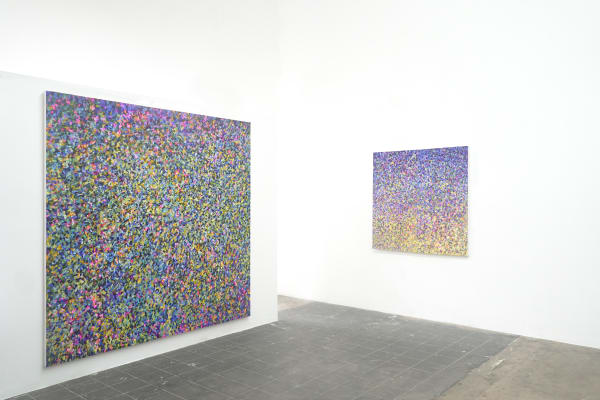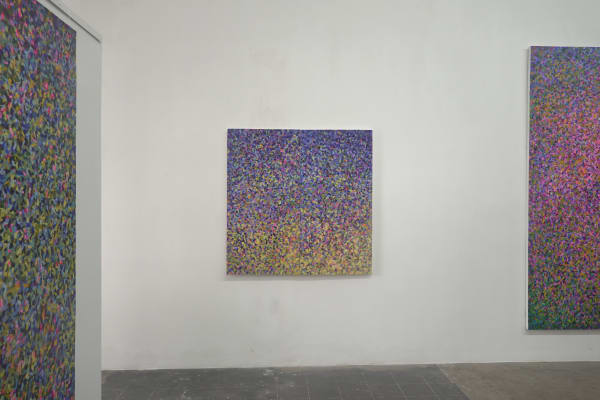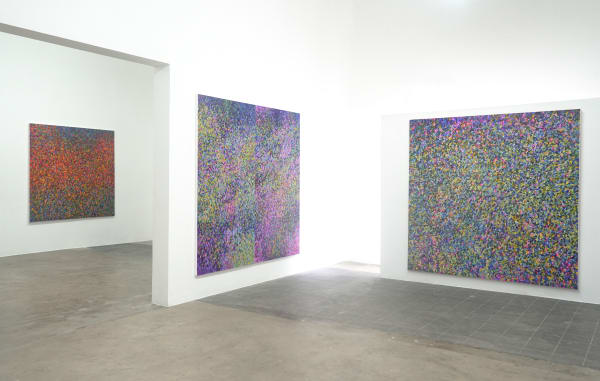Aluyama : Ruwan Prasanna
There is something different about Ruwan Prasanna’s latest exhibition, ‘Aluyama,’ scheduled to launch on the 11th of November at the Saskia Fernando Gallery. Beginning with his Unknown Bird series, as his career has progressed, so has Ruwan Prasanna’s foray into abstraction. Today, he is one of the island’s foremost contemporary artists engaged in abstract painting. His works represent a simplicity that is animated by his sophistication in rendering the fleeting interplay of light and colour in nature.
First showing his works at Kalaa Pola in 2004, Prasanna’s early works were deeply inflected by the oeuvre of Joan Mitchell. As a member of the 1950s New York School, Mitchell’s approach to abstraction was distinctly lyrical and enticed Prasanna’s move away from the more figural style of his Unknown Bird series which explored the ephemeral movement of feathers. In the Post-Impressionist vein, the artist cites Van Gogh, Franz Kline, and Piet Mondrian as some of his earliest influences. Today, his works are arboreal landscapes, but they are unabashedly abstract - evoking the sensation of being immersed in nature rather than literally depicting it. At the forefront of Ruwan Prasanna’s work is feeling; when asked when he knows work is complete, the artist said that he stops when the process of painting no longer brings him excitement. It is this temporality and immediacy in his work that brings it to life. Their calculated unfinishedness represents their vitality, alerting us to the fleeting nature of Ruwan Prasanna’s subject matter. The impasto of the paint, in its thickness and overt upregulation, draws attention to the texture of Ruwan Prasanna’s work, flirting with the viewer’s tactile senses. He places the atmosphere at the forefront, distancing himself from the tired figurativeness of traditional landscaping.
In his 2018 series ‘Komorebi,’ the Japanese word for light shining through trees, the artist represented the dappled filtering of the sun through leaves, a gestural motif he returned to a year later in his Twilight series. Now canonized as his signature style, Twilight boasted a dark colours palette that was deep and dusky. Twilight captured the fading light seen through the canopies of ancient trees on an evening in Colombo: the way the light flickers through the leaves, revealing contrasting colours that seem to dance with each other on the canvas. As we await the opening of his upcoming exhibition, it is clear that there is something markedly different about his conceptualization in this latest series - alerting us to his progression as an artist who has come to be considered one of Sri Lanka’s most important abstract painters.
The colours explored in Ruwan Prasanna’s ‘Aluyama,’ or ‘Dawn,’ are those unseen by the naked eye; instead, they are representative of an inner beauty that evokes the dawn. Splashed across the canvases in spontaneous, thick gestural strokes are a kaleidoscope of bright, pulsating vivid colours. To Ruwan Prasanna, the dawning of a new day represents a rejuvenation of energy. In this he finds something soothing, something wonderfully hopeful. ‘Aluyama’ fully embodies the poetic sense of colour that Prasanna inherits from the Post-Impressionists. The dancing light and colours of dawn vibrate at a frequency that shakes away the worries of yesterday; leaving us feeling fresh and light. This is the feeling that Ruwan Prasanna evokes in his exhibition through the twenty canvas works bathed in swaths of rich orange and yellows with supple pinks and greens dissolving together to create a sense of fluidity. The sequential nature of his work guides a viewer around the room, from one moment in time to another, from one slant of light to another in a procession that mimics the dawning of a new day.
-
 Ruwan Prasanna, Aluyama I, 2021
Ruwan Prasanna, Aluyama I, 2021 -
 Ruwan Prasanna, Aluyama I, 2021
Ruwan Prasanna, Aluyama I, 2021 -
 Ruwan Prasanna, Aluyama III, 2021
Ruwan Prasanna, Aluyama III, 2021 -
 Ruwan PrasannaAluyama VI, 2021Acrylic on Canvas183 x 183 cm
Ruwan PrasannaAluyama VI, 2021Acrylic on Canvas183 x 183 cm
72 1/20 x 72 1/20
ALUYAMA
RUWAN PRASANNA
11 NOVEMBER - 11 DECEMBER 2021
There is something ethereal about Ruwan Prasanna’s latest exhibition, Aluyama.
Beginning with his Unknown Bird series, as his career has progressed, so has
Ruwan Prasanna’s foray into abstraction. Today, his works are arboreal
landscapes, unabashedly abstract and evoking the sensation of being immersed in nature rather than literally depicting it. At the forefront of Ruwan Prasanna’s work is instinct; when asked when he knows a work is complete, the artist states that he stops when the process of painting no longer brings him excitement. It is this temporality and immediacy in his work that brings it to life. Their calculated imperfection represents their vitality, alerting us to the fleeting nature of Ruwan Prasanna’s subject matter.
The impasto of the paint, in its thickness and overt irregulation, draws attention to the texture of Ruwan Prasanna’s work. He places atmosphere at the forefront, distancing himself from the tired figurative nature of the traditional landscape.
In his 2018 series Komorebi, the artist represented the dappled filtering of the
sun through leaves; a gestural motif he returned to a year later in his Twilight series. Now canonized as his signature style, Twilight boasted a dark colour palette that was deep and dusky. It is clear that there is something markedly different about his conceptualization in this latest series - alerting us to his progression as an artist who has come to be considered one of Sri Lanka’s most important abstract painters. The colours explored in Ruwan Prasanna’s Aluyama, or Dawn, are those unseen by the naked eye; instead, they are representative of the essence of dawn. Splashed across the canvases in spontaneous, thick gestural strokes are a kaleidoscope of bright, pulsating vivid colours.
To Ruwan Prasanna, the dawning of a new day represents a rejuvenation of energy. In this he finds something soothing, something wonderfully hopeful. Aluyama fully embodies the poetic sense of colour that Prasanna inherits from the Post Impressionists. The dancing light and colours of dawn vibrate at a frequency that shakes away the worries of yesterday; leaving us feeling fresh and light. This is the feeling that Ruwan Prasanna evokes in his exhibition through the twenty canvas works bathed in swaths of rich orange and yellows with supple pinks and greens dissolving together to create a sense of fluidity. The sequential nature of his work leads the viewer from one moment in time to another, from one slant of light to the other, in a procession that mimics the dawning of a new day.





